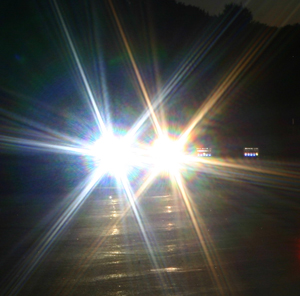QUEZON City, Philippines (February 18) – Stars. They’re so enchanting to look at, even if they show in diminutive numbers. That’s not the case more than a hundred years ago, and the rest of Earth’s previous times. The presence of clouds didn’t hinder the infinite luster of stars – known as the Milky Way – inspiring our ancestors and great artists to use them in art, literature, astronomy, navigation, exploration, theories, mythologies and human curiosity. Yes, Van Gogh’s “The Starry Night” isn’t a fruit of imagination.
The cause of almost-crimson-starless sky? Too much light. Light pollution is excessive and inappropriate use of artificial outdoor light. The increase in population and increase in land area covered for shelter demands the use of countless artificial light—making our generation completely hidden to the vast expanse of stars waiting to be appreciated.
There are four types of light pollution, namely:
- Urban Sky Glow- the pale red/orange sky during the night. It’s a result of outdoor artificial light reflected to the night sky. Commonly seen in populated areas.

- Light trespass- light that falls where it is not needed, intended and wanted. (e.g. streetlights’ ray directed into our homes)
- Glare- excessive brightness that can cause temporary blindness and contrast problems.

- Clutter- redundant lighting that contribute to the three aforementioned.
Aside from obliterating the stars from our sight, there’s are other negative effects brought by light pollution. It can disrupt nocturnal living processes in our ecosystem, including the migratory patterns of animals, their interactions, and physical development.Sleeping patterns are also affected, both humans and animals. Proper onset of light and dark have significant relationship in our body clock and production of melatonin, the hormone responsible for controlling our sleep-and-wake cycles.
Provided below are solutions on how to keep your lights at bay—and used efficiently.
- Only turn your lights on when needed.
- Point the lights downwards and fit them with “side shields”, to avoid the rays travel sideways. To shine them where the light is only wanted is your primary goal.
- Buy energy-efficient bulbs that also have low wattage.
- Provide curtains on your windows to avoid light trespass.
“The darkest skies produce the brightest stars”. It’s a quote once used by Martin Luther King Jr., and meant to be inspirational. But I’ll take this literally than figuratively, for our naked eyes are famished to see the wonders of the heavens at night, and we’re tired already with the fat clouds.
Sources:
Globe at Night- http://www.globeatnight.org/light-pollution.php
Natural Resources Defenses Council- http://www.nrdc.org/thisgreenlife/1209.asp
Dark Skies Awareness Project- http://www.darkskiesawareness.org/faq-what-is-lp.php
(written by Rex Felix C. Salvador I, edited by Jay Paul Carlos, additional research by Lovely Ann Cruz)








